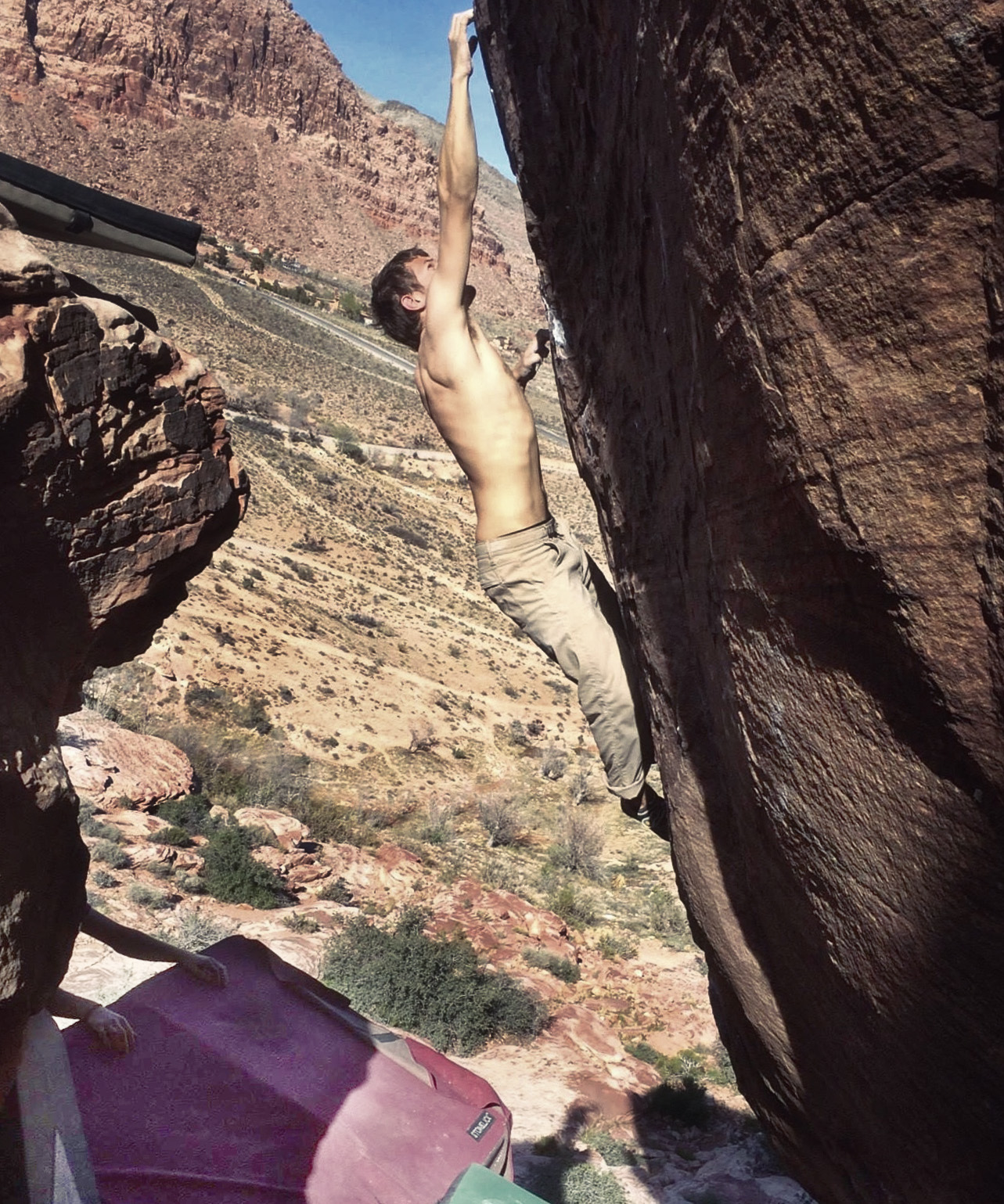Foam
The quality of foam used is the most important aspect of any bouldering pad, and especially one designed for highball climbing.
Stonelick claims to have some of the best foam in the business, and this seems true. The Gordita is made with high density foam that ought to remain firm and supportive over years of use. And since highball bouldering pads aren’t cheap, the foam’s durability is important, too.
Like most bouldering pads, I found that the Gordita started out quite firm, definitely not something you would want to take a backslap on. But the foam quickly softened to a nice level of firmness, and has not softened any further after several months of use. The Gordita is neither too soft nor too firm, and is very similar to the Organic Big Pad in this way. The Black Diamond Mondo seemed to soften up a bit faster than the Gordita or the Big Pad, but became too soft rather quickly, which was a bummer.
So far I have had no problems at all with the foam in the Gordita, despite the fact that it is actually slightly thinner than that of the Mondo and Big Pad. The step-hinge design seems to create a consistent, “uninterupted landing surface” as Stonelick claims. I expect that I will get lots more use out of the Gordita before the foam softens up, and I always feel safe falling on it, whether I’m two or twenty feet above it.

The layout and thickness of the foam in the Gordita is similar to most other highball pads. The top layer is an inch of closed-cell polyethylene foam, which serves to provide the initial impact protection. Below this is three inches of open-cell polyurethane foam that is responsible for most of the pad’s cushioning. There is also a third, half-inch layer of closed-cell foam on the bottom of the pad, where the Mondo and Big Pad have a full inch of foam on the bottom. This extra layer is great to have, as it will still provide an initial impact layer if the pad is used upside down.
Shell
The Gordita’s shell material (comprised of a 1000D Cordura landing surface and a 1050D Ballistic cover) is bomproof, and is very similar to that found on the Mondo or Big Pad. However, I do have some issues with how Gordita’s shell material fits around the foam at the pad’s hinge. The shell fits somewhat loosely over the step-hinge, so the shell material can get bunched up and caught on rocks while the pad is moved around. If the shell fit more tightly over the hinge’s “steps,” it seems like this would eliminate excess material from the hinge, and it wouldn’t catch so easily on the ground, though this isn’t a deal-breaker for me.
Durability
I have had some durability issues with the stitching on the Gordita’s straps, and this is really the one area the pad is lacking. The Mondo and Bog Pad’s straps seem more durable and better reinforced than the Gordita’s. It did not take long after I started using the pad for the sternum strap to become unstitched from the shoulder strap, and I had to sew it back on. Additionally, I have had some of the stitches binding the straps to the pad pop when lifting the pad, and the straps themselves show quite a bit of wear, though this was after over 75 days of use.
Bottom Line
Despite some drawbacks, I really like the Stonelick Gordita. At $385, it’s priced between the Black Diamond Mondo ($400) and the Organic Big Pad ($315). While the construction could use some work, the pad’s foam quality is very good, its unique hinge design doesn’t reduce the pads cushioning at all, and its closure system works great. Anyone looking for a high quality bouldering pad would do well to check out the Gordita.
